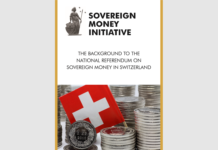With hindsight, we now know the decision not to rescue Lehman resulted in the calamity of 2008 financial meltdown and a prolonged recession which affected millions of lives in the US and around the world. Even Ben Bernanke, then Chairman of the Fed, agreed in his latest research that the collapse of the financial system was the primary reason the recession has such lingering effect.
Then, again, why didn’t the Fed rescue Lehman Brothers? This week, the trio who was directly responsible for the decision to let Lehman fail – Bernanke, Tim Geithner (then New York Fed President), and Hank Paulson (then Treasury Secretary) – joined together at a panel held by Brookings Institution and spoke about the lessons they had learned from the crisis.
During the discussion, panel moderator Andrew Ross Sorkin asked the trio why Lehman was not rescued.
In response, Geithner insisted that the decision to let Lehman fall is because of three reasons:
1) Lehman was weaker than Bearn Stearns, which was rescued in March of the same year;
2) the financial system is more fragile than when they saved Bear Stearns; so the government couldn’t be able to find a private sector buyer for Lehman;
3) without a private company to join the rescue operation given the political climate was against another bailout of investment banks, the government and the Fed opted against helping Lehman.
However, some experts and academics have argued that Lehman at the time had sufficient collateral to ask the Fed for short-term funding and avoided the instant collapse that had happened. Professor Laurence Ball of Johns Hopkins University recently published a book “The Fed and Lehman Brothers,” in which he has made a compelling case that the Fed could have helped Lehman directly through a repo market intervention.
In the interview with us, Prof. Ball doubted that what Geithner has said is factual. “Geithner says they could not rescue Lehman without a firm that would buy Lehman on September 14. That is not true. As I demonstrate in my book, they could have provided liquidity support to keep Lehman in operation for weeks or months.”
The liquidity support Ball mentioned is a standing facility called Primary Dealer Credit Facility (PDCF). PDCF was an emergency lending facility that Federal Reserve set up in March 2008 which allows Primary Dealers to lend cash against collateral.
The Fed created PDCF after the Bear Stearn crisis as a mean to provide protection to the investment banks against runs on repo market. With PDCF, the Fed allowed the dealers to lend cash through PDCF with a broad range of collateral, with only a slightly higher haircut, and that protected the dealers from facing difficulties borrowing in the repo.
This is especially true after 14th September 2008, PDCF started to accept any collateral that can be pledged on the tri-party repo market. Thus, PDCF acted as a standing alternative for those who fear the repo market is shutting down on them. By reducing the fear of liquidity crisis, lenders had less worry of losing money in the repo market. Hence they were more willing to participate and provide cash in the market. This greatly reduced the risk of runs in the repo market.
In “The Fed and Lehman Brothers”, Prof. Ball argues that Lehman Brothers had sufficient collateral to lend cash through PDCF that could help Lehman survive for an extended period; even if that was not enough for Lehman to change to a long-term sustainable business operation, it still could have given Lehman the time to close down in an orderly manner.
“During that period, the Barclays deal might have been fixed, or they might have raised capital elsewhere, or they might have restructured the firm and survived. At worst, there could have been an orderly wind down. There was no reason that Lehman had to declare bankruptcy immediately, with all the destructive consequences.” Ball added.
Barclays was one of the potential buyers of Lehman’s business, but the deal collapsed when UK law required a shareholder vote before the bank can guarantee Lehman’s obligations, which would take 30-60 days, an amount of time Lehman didn’t have.
In the panel discussion, Bernanke also commented on the possibility of providing short-term funding to Lehman. He said that the decision of not rescuing Lehman was based on the judgment of the sustainability of Lehman. At that time, they decided Lehman didn’t have a viable business going forward. Even with temporary funding from the Fed, Lehman might only be able to sustain a few more days.
Geithner furthered this argument, saying that even if the Fed had lent “generously” against the collaterals Lehman had, the fact was that “Lehman’s business was bleeding” continuously, the bailout would not have helped Lehman to turn around from the eventual failure.
Ball disagreed, “Lehman had enough collateral to borrow and meet its cash needs for quite a while, long enough to work out a better solution to its problems than the chaotic bankruptcy.”
According to Prof. Ball’s estimation, Lehman needed around $84 billion of cash to avoid collapsing on 14th September 2018; on the other hand, Lehman held $114 billion PDCF-eligible assets on the balance sheet. That included $26 billion of equity, $41.7 billion of corporate debt, and $45.9 billion of Mortgage Backed Securities, among other assets. This amount was more than enough to cover the 17% haircut ratio Lehman should expect.
“Even if Lehman had not been able to survive in the long run, they could have been wound down slowly with Fed liquidity support, with much less damage to the economy,” Ball continued.
On the day before Lehman collapsed, the Fed declined Lehman Brothers Holding Inc access to PDCF, but only allow its dealer-broker subsidiary Lehman Brothers Inc (LBI) to lend from PDCF. The last chance for Lehman was to transfer all the eligible collateral to LBI to obtain liquidity from PDCF. Yet this option was explicitly declined by the Fed, This was the last nail in Lehman’s coffin and forced it to bankruptcy immediately.
“Lehman executives were preparing a wind-down plan on September 14, but they were told not to waste their time because the Fed had refused the necessary liquidity support and demanded immediate bankruptcy,” Ball concluded.










